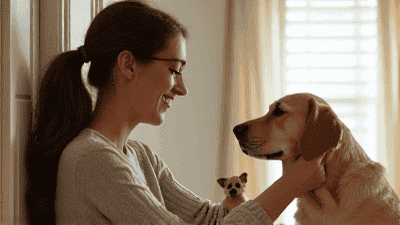
For many families, pets are cherished members of the household. They bring joy, companionship, and countless moments of laughter. However, integrating pet care into an already busy family schedule can be challenging. This is where the importance of routine comes into play. Establishing a structured routine for pet care not only ensures that your pet’s needs are met but also helps balance family life, reduce stress, and foster a harmonious environment for everyone.
Routine is essential for both pets and their human families. Pets thrive on consistency, and a well-structured routine helps them feel secure, reduces anxiety, and promotes good behavior. For families, a routine simplifies pet care, making it easier to manage alongside work, school, and other commitments. Here’s why routine is so important in pet care:

Creating a pet care routine involves identifying the essential tasks and scheduling them in a way that fits your family’s lifestyle. Here are the key elements to include in your pet care routine:
Pets thrive on regular meal times. Determine how often your pet needs to be fed (usually twice a day for dogs and cats) and choose specific times that work with your family’s schedule. Stick to the same times each day to create consistency.
Physical activity is crucial for your pet’s health and happiness. Schedule daily exercise and play sessions that fit your pet’s energy level and needs. For dogs, this might include walks, runs, or playtime in the yard. For cats, interactive toys or climbing structures can provide needed stimulation.
Grooming needs vary depending on the type of pet. Dogs may require regular brushing, nail trimming, and bathing, while cats need brushing and occasional nail trimming. Include grooming tasks in your routine to keep your pet clean and healthy.
Training sessions and mental stimulation activities are important for your pet’s development and well-being. Set aside time each day for training exercises, puzzle toys, or interactive games to keep your pet engaged and mentally sharp.
Regular veterinary checkups, vaccinations, and preventative care are essential for your pet’s health. Create a schedule for routine vet visits and ensure that all family members are aware of upcoming appointments.
Pets need time to rest and recharge, just like humans. Incorporate quiet periods into your routine where your pet can relax in their designated space without disruptions.
Creating a pet care routine that works for your family requires thoughtful planning and flexibility. Here’s a step-by-step guide to help you get started:
Begin by evaluating your family’s daily routine, including work, school, extracurricular activities, and other commitments. Identify time slots where pet care tasks can be easily integrated.
Involve all family members in pet care by assigning specific tasks based on age and ability. For example, younger children can help with feeding, while older kids can take on walking or grooming responsibilities. Rotating tasks ensures that no one person feels overburdened.
A visual schedule helps everyone stay on track and ensures that tasks are completed consistently. Use a chart, calendar, or app to outline daily and weekly pet care tasks. Include feeding times, exercise, grooming, and vet appointments.
If your family is new to a pet care routine, start with a few key tasks and add more as everyone becomes comfortable. For example, begin with feeding and walking, then gradually introduce grooming and training.
Life can be unpredictable, so it’s important to remain flexible. If a task is missed, don’t stress; simply adjust the schedule as needed. The goal is to create a routine that works for your family, not to follow a rigid plan.
Regularly assess how the routine is working for both your family and your pet. Make adjustments as needed to ensure that everyone’s needs are being met.

Once you’ve established a pet care routine, maintaining it requires consistency and commitment. Here are some tips to help you stay on track:
Use alarms, calendar notifications, or task management apps to remind family members of pet care responsibilities.
Turn pet care tasks into enjoyable activities. For example, turn grooming into a bonding session or play games during exercise time.
Keep pet supplies, such as food, toys, and grooming tools, in designated areas to make tasks more efficient.
Acknowledge and celebrate when family members consistently complete their pet care tasks. Positive reinforcement encourages continued participation.
Hold regular family meetings to discuss how the routine is working and address any challenges or concerns.
Involving children in pet care routines is a great way to teach responsibility, empathy, and teamwork. Here’s how to get kids involved:
Choose tasks that match your child’s age and abilities. For example:
Educate children on how to interact with pets gently and respectfully. Model appropriate behavior and supervise interactions to ensure safety.
Help children understand the importance of consistency in pet care. Encourage them to complete their tasks at the same time each day.
Use pet care tasks as opportunities to teach children about animal behavior, nutrition, and health. This fosters empathy and a deeper understanding of their pet’s needs.

A well-structured routine benefits both families and pets in numerous ways:
Balancing family life with pet care can be challenging, but establishing a routine makes it more manageable and rewarding. A structured schedule ensures that your pet’s needs are met, reduces stress for your family, and fosters a harmonious household. By involving everyone in the process, you can teach valuable lessons in responsibility, empathy, and teamwork while creating lasting memories with your beloved pet. So, take the time to create a pet care routine that works for your family, and enjoy the many benefits of a balanced and happy home.